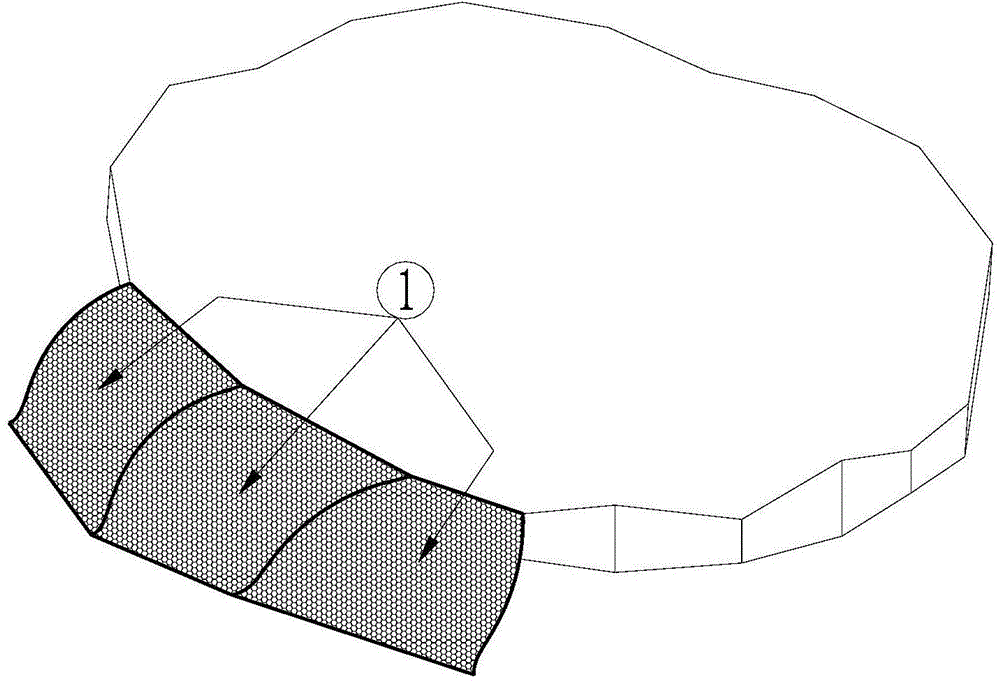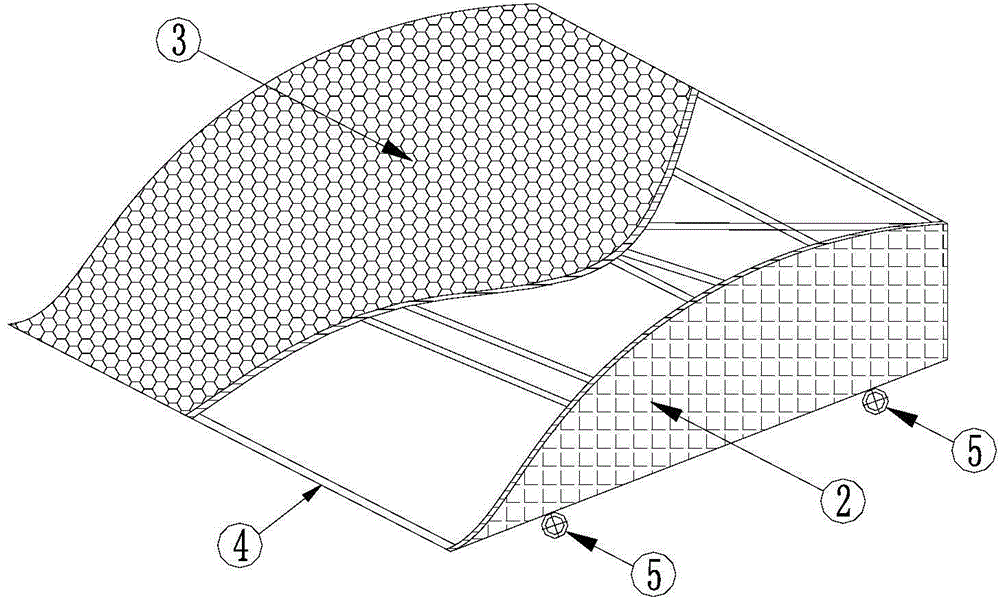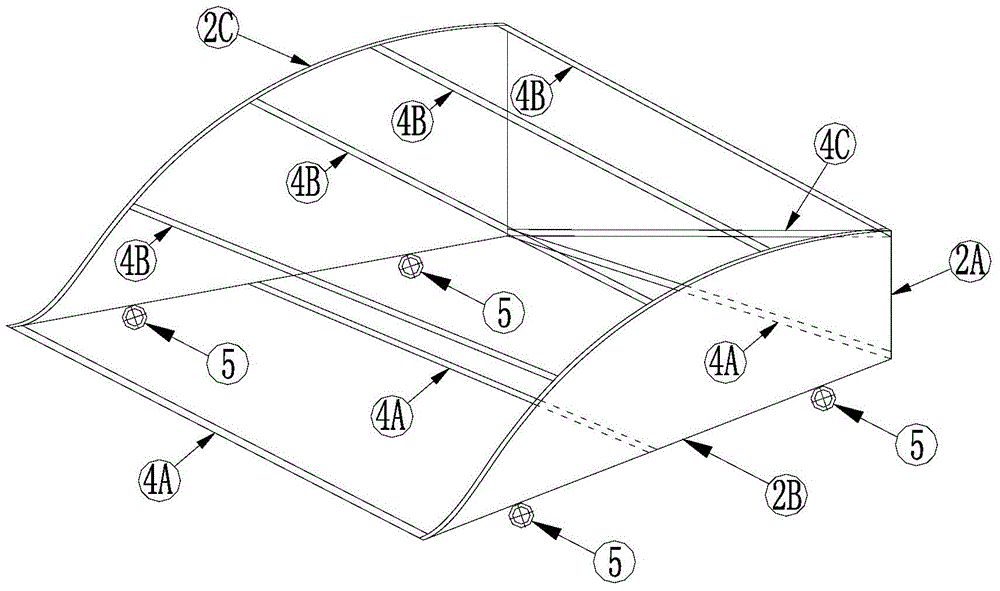Three-dimensional gradient boundary transition device applied to wind field characteristic wind tunnel experiments of terrain model
A terrain model, wind tunnel test technology, applied in the direction of measurement device, aerodynamic test, machine/structural component test, etc., can solve the problem of high wind tunnel space requirements, difficult to apply wind tunnel test needs, separation and other problems
- Summary
- Abstract
- Description
- Claims
- Application Information
AI Technical Summary
Problems solved by technology
Method used
Image
Examples
Embodiment Construction
[0032] A three-dimensional gradual boundary transition device applied to wind tunnel tests of wind field characteristics of terrain models, such as Figure 1 ~ Figure 2 As shown, the transition device is spliced by a plurality of segments 1, wherein the specific composition of each segment 1 is:
[0033] The three sides of each side panel 2 are vertical side 2A, bottom side 2B and curved side 2C; the bottom sides 2B of the two side panels 2 erected are connected by 3 to 5 lower horizontal braces 4A; the two side panels 2 The curved side 2C of the side plate 2 is connected by 4 to 6 upper cross braces 4B, and the end points of the 4 to 6 upper cross braces 4B are evenly distributed on the curved side 2C of the side plate 2; The bottom end of the vertical side 2A of the board 2 is connected by a diagonal brace 4C; the surface layer 3 of the KT board is fixedly laid on the curved surface formed by the curved side 2C of the two side boards 2 and the upper cross brace 4B.
[003...
PUM
 Login to View More
Login to View More Abstract
Description
Claims
Application Information
 Login to View More
Login to View More - R&D
- Intellectual Property
- Life Sciences
- Materials
- Tech Scout
- Unparalleled Data Quality
- Higher Quality Content
- 60% Fewer Hallucinations
Browse by: Latest US Patents, China's latest patents, Technical Efficacy Thesaurus, Application Domain, Technology Topic, Popular Technical Reports.
© 2025 PatSnap. All rights reserved.Legal|Privacy policy|Modern Slavery Act Transparency Statement|Sitemap|About US| Contact US: help@patsnap.com



